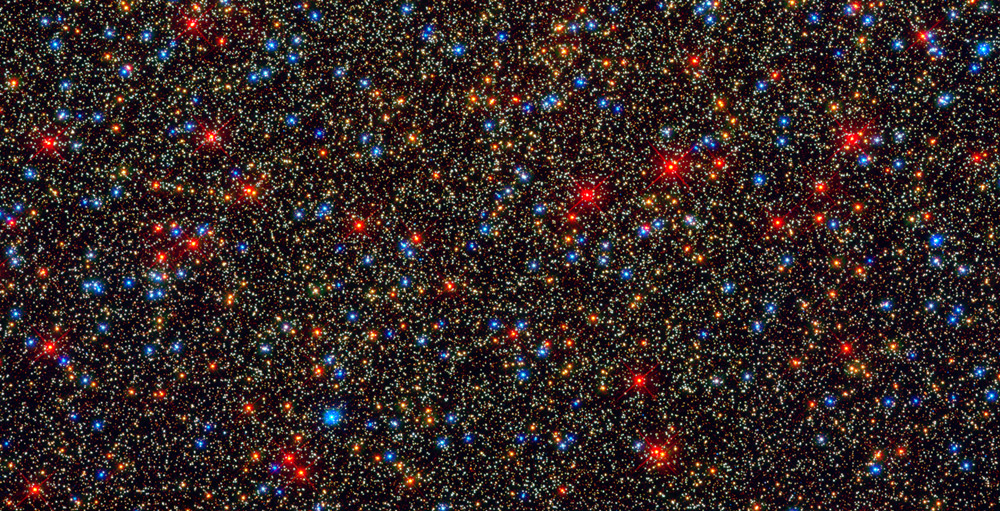







| BOOKS | F. A. Q. | ARTICLES | TALKS | ABOUT KEN | DONATE | BEYOND OUR KEN |
|---|
By Ken Croswell
Published on NewScientist.com (November 12, 2009)

Kapteyn's Star likely originated in Omega Centauri, shown
here, which itself was once the nucleus of another galaxy.
Credit: Hubble Space Telescope. NASA, ESA, and the SM4 ERO
team.
Here's an apple that landed far from the tree. A dim star just 13 light years from Earth was born in a cluster 17,000 light-years away.
Discovered in 1897, Kapteyn's Star is the 25th nearest star system to our sun, but it is no local, says Elizabeth Wylie-de Boer of Mount Stromlo Observatory in Canberra.
The cool star's composition is tricky to study, but astronomers can look at 16 other stars in the same "moving group", all of which orbit the galaxy backwards and are very old. The odd motion marks them as members of the Milky Way's ancient population of halo stars.
Of the stars, 14 had the same abundance of elements--such as sodium, magnesium, zirconium, and barium – as Omega Centauri, the Galaxy's most luminous globular cluster. The cluster emits a million times more light than the sun.
"It's long been thought that Omega Centauri is the left-over nucleus of a dwarf galaxy that merged with the Milky Way," says Wylie-de Boer, whose paper will appear in the January 2010 Astronomical Journal. "During the merger, the outer regions of this dwarf galaxy were stripped."
Some of the cast-off stars ended up near the Sun, with one landing a mere 13 light years from Earth.
Ken Croswell earned his Ph.D. in astronomy from Harvard University and is the author of The Lives of Stars.
"A stellar picture of what we know or guess about those distant lights."--Kirkus. See all reviews of The Lives of Stars here.
| BOOKS | F. A. Q. | ARTICLES | TALKS | ABOUT KEN | DONATE | BEYOND OUR KEN |
|---|